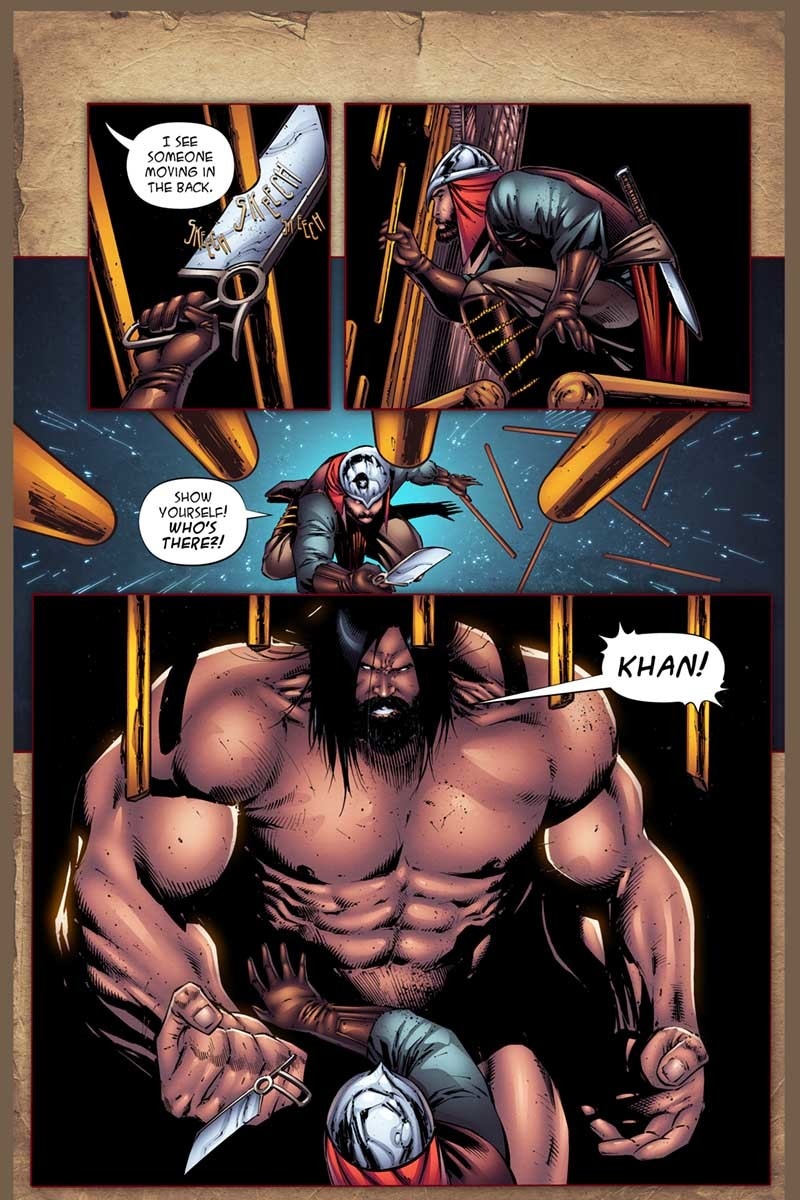How two Pakistani-American doctors introduced the world to Mughal superheroes
Omar Mirza and Khurram Mehtabdin are New York-based doctors with expectedly demanding work schedules. Yet, the two manage to find time for their passion project: a comic series called Zindan (Urdu and Persian for prison). Their comics draw on the rich history of the Mughal Empire to introduce South Asian superheroes.
It might strike some as curious: how do two young doctors from New York end up telling fictionalised tales about Mughal India?
After speaking to them it becomes clear that their identity as Pakistani-Americans has largely informed their decision to explore this theme.
“We wanted to romanticise South Asian history,” says Mehtabdin.
“For us it was an opportunity to reshape the narrative. Unfortunately when you see TV and the news these days, it’s a very negative portrayal of that part of the world. So we wanted to show that… there are heroes there too,” says Mirza.

“When you think of heroes you think of New York [based] white, Caucasian [characters] — it’s very America-centric. We wanted to say there are heroes all over the world, so kids can look up to people who look like them. You know, brown skinned, dark bearded, long-haired heroes,” he adds.
The need for diverse superheroes is something the two felt first-hand during their childhood. Let's take a step back and look at their origin stories.

Growing up as a South Asian in Ohio, Mirza sometimes felt like an outsider — a lot like one of his favourite comic book characters, Peter Parker (Spider-Man).
As a second-grader, he was hooked to comics and was especially drawn to Parker's struggles of feeling like he doesn’t belong with his peers.


In high school, when Mirza finally realised he couldn’t be a real superhero, he chose another career path which would allow him to save lives. He moved to New York City to study medicine.
It was at this time that he met Mehtabdin.

Mehtabdin had grown up in Albany, New York, over 700 miles away from Mirza's hometown of Cincinnati. Yet, the two had an almost identical childhood. While a lot of that had to do with being raised by Pakistani-origin parents, their experiences as Americans had also been very similar.
At medical school the two instantly became friends.
Soon they discovered that besides their backgrounds and aspirations of becoming doctors, they had another thing in common: they both really loved comics.


Today, when people meet Mirza and Mehtabdin, they are often curious about the contrast between having a medical health career and being writers of a comic.
We sat down to ask them the same question and more.
Dawn.com: You’ve created a comic book series, but you’re also doctors — is the latter just a desi thing?
Mirza: There’s a truth to the [idea] that you can meet desis in America and ask them, ‘What're you doing?’ And they’ll either be an engineer, lawyer or doctor…
Mehtabdin (playfully interrupts): It’s not a bad thing!
Mirza: It’s not a bad thing; all of our parents really influenced us, I’m sure, to try to pursue those careers...
Mehtabdin: Coming here to this country, the thing that’s always put forth to us is: 'Education, education, education; you can’t get anywhere in this world without having a good education.' So, medicine, for our upbringing, is kind of that safe career.
Mirza goes on to stress that looking back at art history, the greatest artists were also great scientists. “Da Vinci was not just an artist, he was also a prolific inventor,” he says.
“In the modern sense science and art have been divorced to be sort of on opposite ends which I don’t think is a true division,” he adds.
He then narrates an incident from a medical conference last year, where their two passions — medicine and Zindan — came together.


It is the annual Association of Physicians of Pakistani Descent of North America (APPNA) convention. The event is brimming with energy as doctors, their families and friends socialise, shop and attend talks.
Mirza has just wrapped up a discussion named, 'From hospital wards, to story boards'. He is now at the Zindan stall, which features prominent 10-feet-tall banners of the comic's characters Zain and Timur.
A child named Taimur, who is about four years old, sees the banner and runs up to the booth.

Taimur: Is that like me?
Mirza: Yes, yes, that’s like you!
Taimur: Can you bring him to my birthday party?
Mirza: When is your birthday?
Taimur (Asks his mother): When is my birthday?
"He didn't know when his birthday was," Mirza says with a laugh.
He clearly values this interaction a lot. “For me that was the first time that this really felt like a success, because I saw that kid and just his face light up. He immediately identified with the characters,” he says.
Mehtabdin nods in agreement. "As a kid I never found anything...like a sticker with my name on it, a keychain with my name on it — never. So it was important to us for our characters to have names like Zain and Timur," he says.

Edit: A previous version of this article misstated the distance between Cincinnati, Ohio and Albany, New York. The story has been updated to rectify this error.






